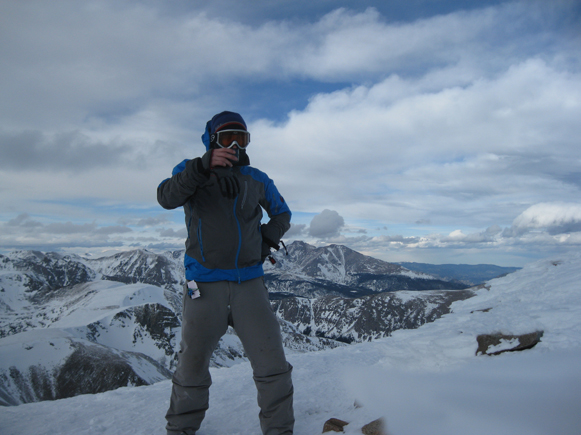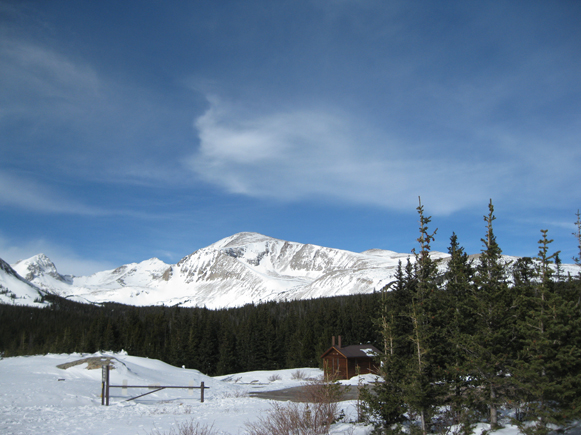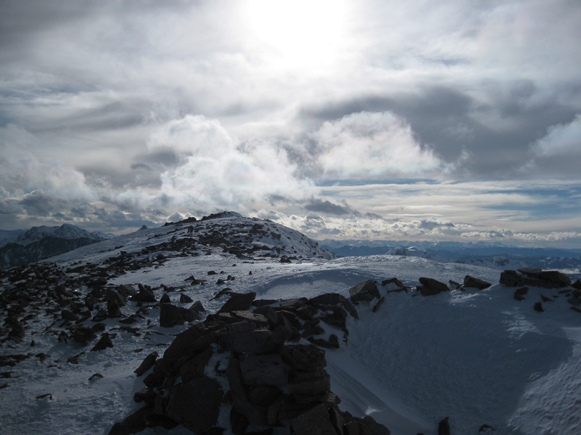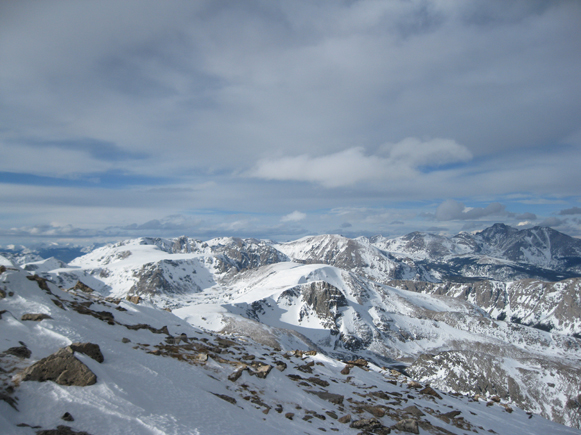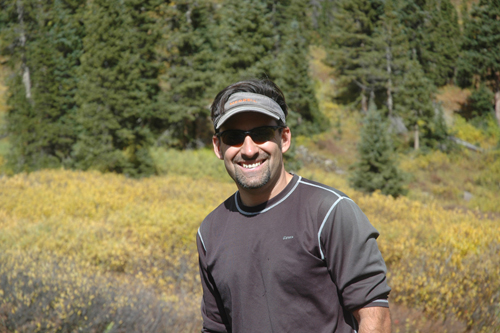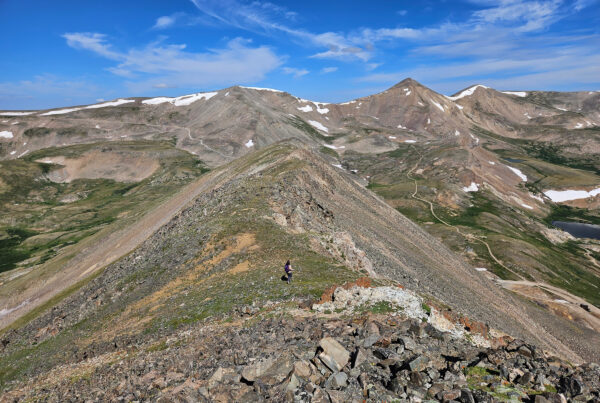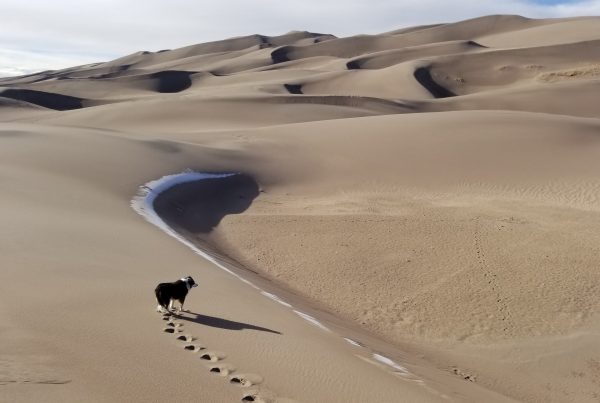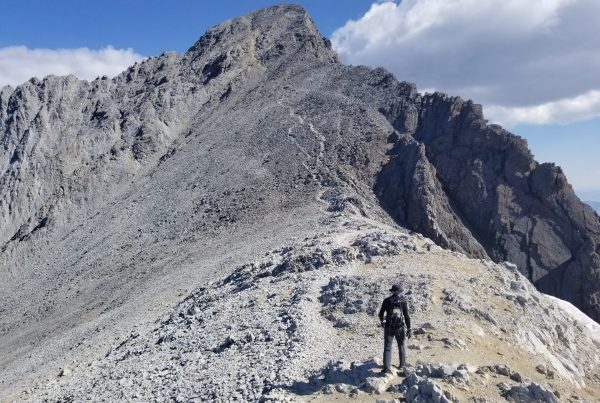Last Updated on January 8, 2014 by James Dziezynski

360° view from the summit of Mount Audubon, January 30, 2011. Click for a larger view (then click again in your browser for full size).
Mount Audubon has a special place in my heart. The modest 13,233 ft. peak in the Indian Peaks Wilderness was the first high-altitude winter summit I climbed in Colorado and nearly 12 years later I still enjoy the challenge of getting to the top of this windswept mountain. January stood out as the only month I had never climbed Audubon, so on January 30th I went for the top on an unpredictable winter’s day.
Every other time I’ve done Audubon in the off-season, I’ve reached the trailhead (3.2 miles one way) by riding my mountain bike. The road is closed from October through May but the wind usually scours the pavement, making it very bike friendly. However, this year the snow has come early and it was time to break out the cross country skis. A little variety is fun, even though I am an abysmal cross-country skier. My skill set includes going uphill and gliding on flats, but I’m not so good at stopping, turning or any downhill that is more than a 2% grade. So if nothing else, the prelude to the hike would be interesting.
~*~
The plan of attack was to ski to the trailhead, switch over to snowshoes and navigate my way to the open tundra above treeline. From there, I’d stash my snowshoes and bundle up for the chilly, windy trip to the top.
It’s amazing to see the hard frozen drifts of snow where the tree line begins to recede. Drifts are tough as hardened glass on top but underneath the snow is as fine as powdered sugar. A few times I did full body post-holes, even with snowshoes, but luckily the snow was mostly sturdy enough to guide me to treeline.
Once on the windswept shoulder of Mount Audubon, it was a pleasant but very cold hike with the occasional icy patch. Amazingly, the chirps of hearty pikas rang out, denoting the presence of some very tough critters that stay atop the high peaks year round. While the pikas continue their activity year-round marmots huddle in the frozen earth, hibernating the winter away. Clouds drifted in and altered the sunlight that bathed the mountain in shades of steel grey and pastel lavender.
~*~
The summit itself was astounding; to the west a wall of cloud was slowly building. The winter air was clean and clear (in contrast to the brown smog that hovers on the horizon on most summer days). From the top, one could see Longs Peak to the north, Denver on the plains to the east and south all the way to Pikes Peak in Colorado Springs.
~*~
It was too cold to linger at the summit so after a quick spot of tea, I made my way down. The afternoon light during the descent highlighted the sepia shades of dead grass and rock. By the time I finished the 8-mile trip and returned to my skis at the trailhead, twilight was beckoning the brightest stars in the winter sky. I switched out my snowshoes, clicked into my skis and promptly wiped out on a 4-foot hill. With a little practice, I was able to glide out, making for a 14-mile round trip.
~*~
It wasn’t an abnormally long day, about 7 hours total, but because the cold had become more penetrating as the day wore on, I was glad to be back to my truck. The last vestiges of daylight darkened as I watched the prominent dome of Audubon fade in my rear view mirror.

